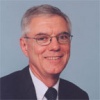Collaboration Serving Thousands
In 2003, an important collaboration occurred in Peoria that dramatically changed how care is provided to many of our medically underserved residents. A year later, Peoria’s first federally qualified health clinic (FQHC) for the uninsured and those covered by Medicaid and Medicare officially opened. It brought together the Heartland free clinic, the OSF Saint Francis Mother Frances Krasse Family Healthcare Center, and the components of Fayette Companies’ Human Service Center.
Since becoming a FQHC, the new Heartland Community Health Clinic’s patient base has exploded from 849 in 2003 to nearly 9,000 today. People who visit Heartland include:
• Non-insured self pay (41 percent)
• Medicaid (36 percent)
• Private insurance (9 percent)
• Medicare (14 percent).
The Heartland free clinic opened in 1992 in the former residence of the Bishop of the Catholic Diocese of Peoria near St. Mary’s Cathedral, a result of local hospitals and physicians working together to serve those ineligible for Medicaid, but unable to purchase private insurance. Physicians donated their time and the three Peoria hospitals provided care on a rotating monthly basis. Six years later, OSF opened a $2.1 million family health care outpatient center near Neighborhood House and named it after a founding nun, Mother Mary Frances Krasse.
Even then, it was obvious the need was still great, and a combining of forces could be of great benefit to many in the tricounty area. So in 2003, a broadbased community collaboration approached Rep. Ray LaHood and asked for his assistance in acquiring funds to support a system of care. LaHood’s efforts were successful, and Heartland Community Health Clinic opened its doors as an FQHC on February 1, 2004. It achieved the gold standard in health care in its first year of operation by attaining JCAHO accreditation, and is a Heart of Illinois United Way Agency.
Headed by CEO Joan Krupa and Medical Director Dr. Gregg Stoner, the Heartland Clinic is seeing the growth hoped for when the federal designation was granted. Five sites, including a Dental Clinic and the former Carver Family Health Center, now offer quality comprehensive primary health care to the area’s most vulnerable citizens. While the target population includes more than 15,000 persons in Peoria’s census tracks 1-15, Heartland accepts any patient in need of care. The medical needs of this population are often serious and require both ongoing and episodic attention, including treatment for diabetes and hypertensive disorders. Grants and individual/corporate donations help fund the clinic’s efforts to keep doors open to all in need of services.
It’s become obvious that when we come together as a community, much can be accomplished. We should be very proud of what Heartland has accomplished and what its future holds for our fellow citizens. IBI
Since becoming a FQHC, the new Heartland Community Health Clinic’s patient base has exploded from 849 in 2003 to nearly 9,000 today. People who visit Heartland include:
• Non-insured self pay (41 percent)
• Medicaid (36 percent)
• Private insurance (9 percent)
• Medicare (14 percent).
The Heartland free clinic opened in 1992 in the former residence of the Bishop of the Catholic Diocese of Peoria near St. Mary’s Cathedral, a result of local hospitals and physicians working together to serve those ineligible for Medicaid, but unable to purchase private insurance. Physicians donated their time and the three Peoria hospitals provided care on a rotating monthly basis. Six years later, OSF opened a $2.1 million family health care outpatient center near Neighborhood House and named it after a founding nun, Mother Mary Frances Krasse.
Even then, it was obvious the need was still great, and a combining of forces could be of great benefit to many in the tricounty area. So in 2003, a broadbased community collaboration approached Rep. Ray LaHood and asked for his assistance in acquiring funds to support a system of care. LaHood’s efforts were successful, and Heartland Community Health Clinic opened its doors as an FQHC on February 1, 2004. It achieved the gold standard in health care in its first year of operation by attaining JCAHO accreditation, and is a Heart of Illinois United Way Agency.
Headed by CEO Joan Krupa and Medical Director Dr. Gregg Stoner, the Heartland Clinic is seeing the growth hoped for when the federal designation was granted. Five sites, including a Dental Clinic and the former Carver Family Health Center, now offer quality comprehensive primary health care to the area’s most vulnerable citizens. While the target population includes more than 15,000 persons in Peoria’s census tracks 1-15, Heartland accepts any patient in need of care. The medical needs of this population are often serious and require both ongoing and episodic attention, including treatment for diabetes and hypertensive disorders. Grants and individual/corporate donations help fund the clinic’s efforts to keep doors open to all in need of services.
It’s become obvious that when we come together as a community, much can be accomplished. We should be very proud of what Heartland has accomplished and what its future holds for our fellow citizens. IBI

